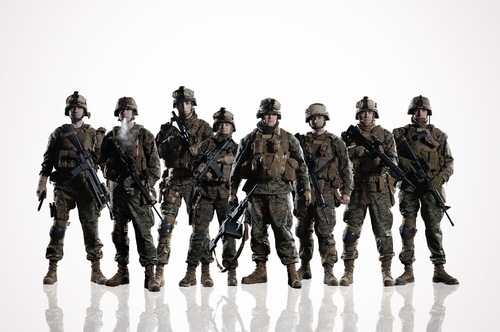Recently, I was on a call with a Gartner analyst, who reported that many of the companies who had not had successful VDI implementations early on were revisiting the technology to see if they could get it right a second (or third, or fourth) time around.

No doubt about it…. virtualizing your desktops is difficult, and one of the main challenges stems from the fact that each organization’s environment is so different, that every one of these deployments will, by nature, require a customized path to success.
However, on the premise that if you study success, you, too, can learn to be successful, I have decided to do a series of blog posts on how some Liquidware Labs customers have won the VDI battle.
Let’s get this straight right from the start. Desktop transformation can be overwhelming because you are constantly presented with challenges and obstacles. It takes a tough, pretty fearless kind person to get through a project of this kind. The customers profiled in this blog series are exceptional. They are pioneers, launching their VDI projects early on with little to no roadmaps and learned the “how-to’s” in the trenches.  Fortunately, we at Liquidware Labs got the chance to be right there with them.
So without further ado…. I’d like to launch this series with a a short profile of Arbitration Forums. This organization had a serious use case for data and desktop security which propelled them through their VDI project. I laid out the facts below, but you can read the full Customer Success Story on our website.
Arbitration Forums
Company Description
Arbitrations Forums is the largest U.S. provider of arbitration and subrogation services. It has 4,700 members of insurers and other agencies who use arbitration as an alternative to the legal system. AF also helps process settlements of the claims. AF has internal staff as well as about 70 Regional Field Arbitration Managers (FAMS) who are outside accredited consultants but who work on behalf of member organizations to negotiate, resolve and document outcomes of settlements. They update this information into AF’s central data repository where it is viewed by member organizations.
AF’s VDI Vets:Â Eric Tuley, IT Ops Manager, and Victor Franklin, IT Support Engineer.
What were the objectives for AF’s VDI project?
The company supports claims and arbitration activities for insurance companies and other member agencies who audit AF’s security as they do not want confidential information compromised. AF must pass this audit to maintain its critical role for its membership. AF IT staff wanted to use non-persistent clones in order to create desktops that would refresh after use in order to help meet this security standard. However, in order to deliver desktops equivalent to physical PCs, AF needed to incorporate UEM for user personalization and control. They chose Liquidware Labs ProfileUnity.
Why did AF choose ProfileUnity over other offerings?
- Only ProfileUnity could “harvest” and maintain the user customizations that they had already created. AF insisted in continuity of user experience on the virtual desktops in order to reduce training time as well as to increase acceptance.
- AF was using a number of plugs-ins for MS Outlook including RightFax, Symantec Enterprise Vault and MS Dynamics CRM. In addition they had ThinApp’d a bunch of smaller one-off applications. Access to all of these applications were managed through Active Directory User Groups. Of all solutions AF looked at, only ProfileUnity was capable of supporting AF’s application linking setup.
- Only ProfileUnity provided the ability to lock down and control desktops from a central console.
- Ease of use/ease of setup.
- Price
What were the meaningful results for AF?
- AF was able to leverage non-persistent linked clones to deliver desktops.
- Â They started with the Customer Care Center but have since rolled out to support internal staff and, more importantly, their external field operators, the Regional Field Arbitration Managers (RFAMs), who are outside consultants. So they are able to support more, diverse user groups with virtual desktops, thus getting more from their investment in the technology.
- ProfileUnity allowed AF staff to control what they moved over from legacy desktops. This ability let them enable appropriate customizations, but weed out those which are not. In addition ProfileUnity was set to leave out unauthorized software, files, or other unapproved relics based on an AF-specific schema.
- RFAMs now use much more secure thin clients to log into a VM in order to access all their applications. There is no ability to download data from these workspaces. Desktops perform better than before. RFAMs are able to save work to the server even if the local connection is lost.
- Desktop maintenance is now regular and consistent both for internal staff and for external RFAMs. Time required to perform these tasks has dropped down dramatically.
- AF can lock down desktops with IP filtering to prevent access to AF cloud from insecure home or personal devices to secure endpoints.
- Virtual desktops provide enhanced fail-over protection from the main site to a secondary site. All user profiles are on a virtual file server that is SRM protected. Desktops can be recovered within 4 hours.
- User experience/performance across all groups on virtual desktops is “better” than physical.
- Â AF now easily clears the audit of member organizations, exceeding the standards for desktop security and availability of data.
- Â AF is now considering expanding its systems to support other lines of business.








[…] Read the entire article here, Tales From The Front Series –Arbitration Forums […]
[…] in use to make their software work more effectively. The company recently published a series of blog posts that get into the trenches of thin clients use. These posts examine successful deployments of thin […]